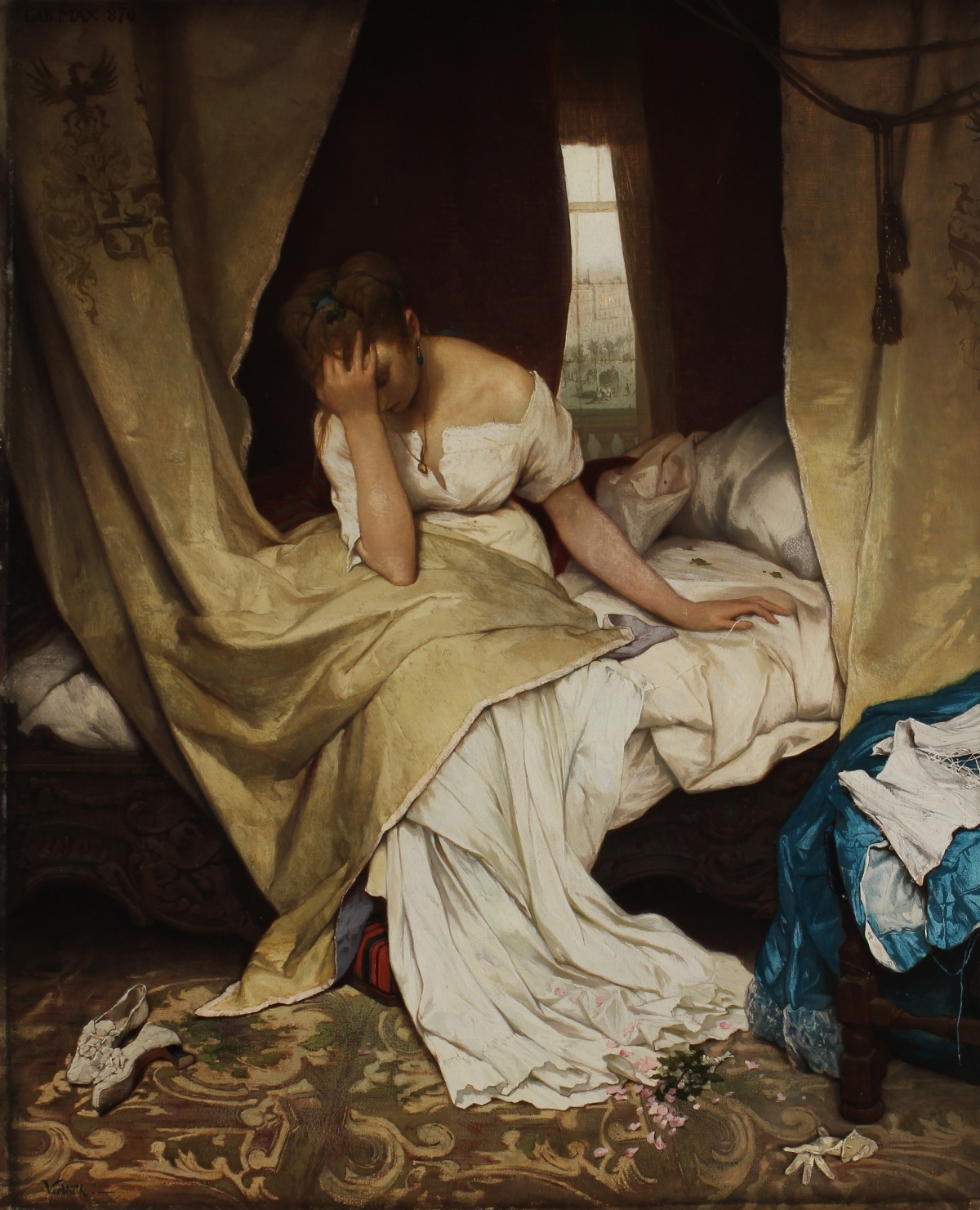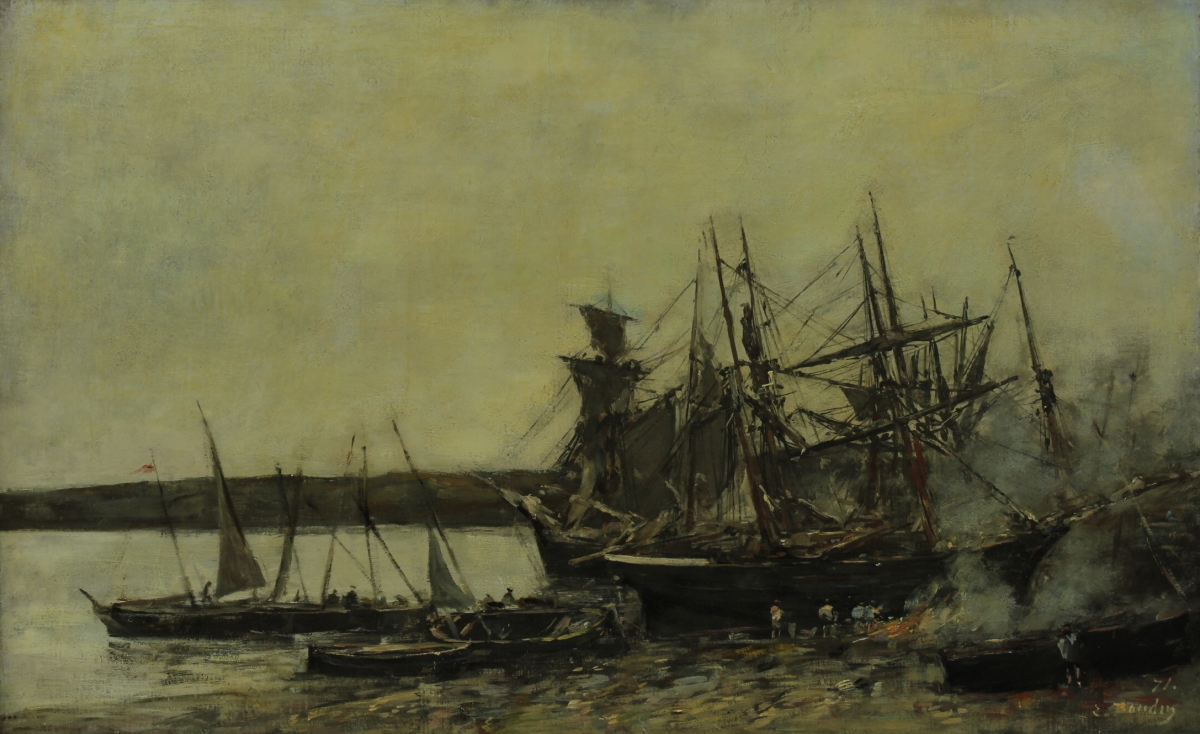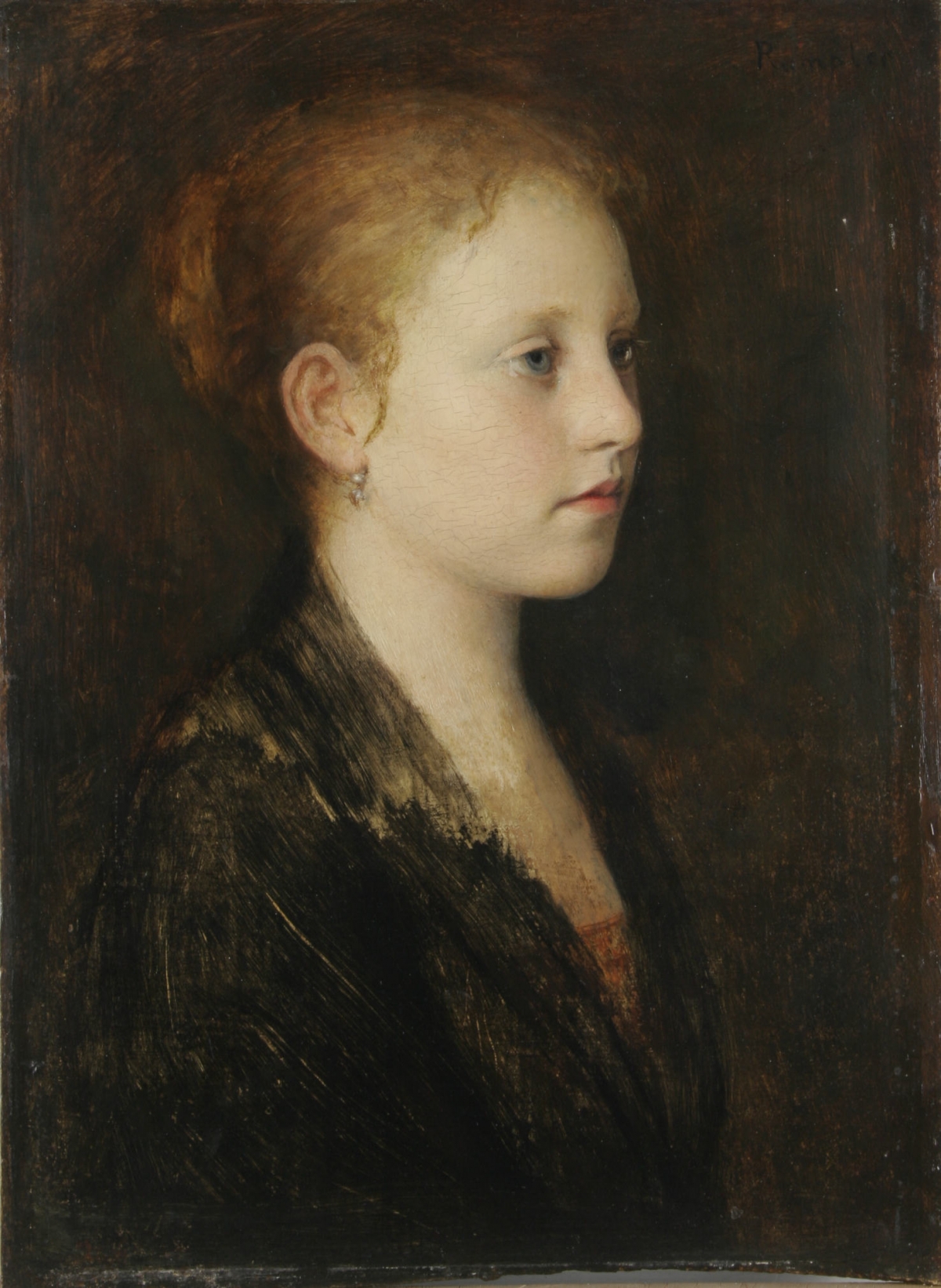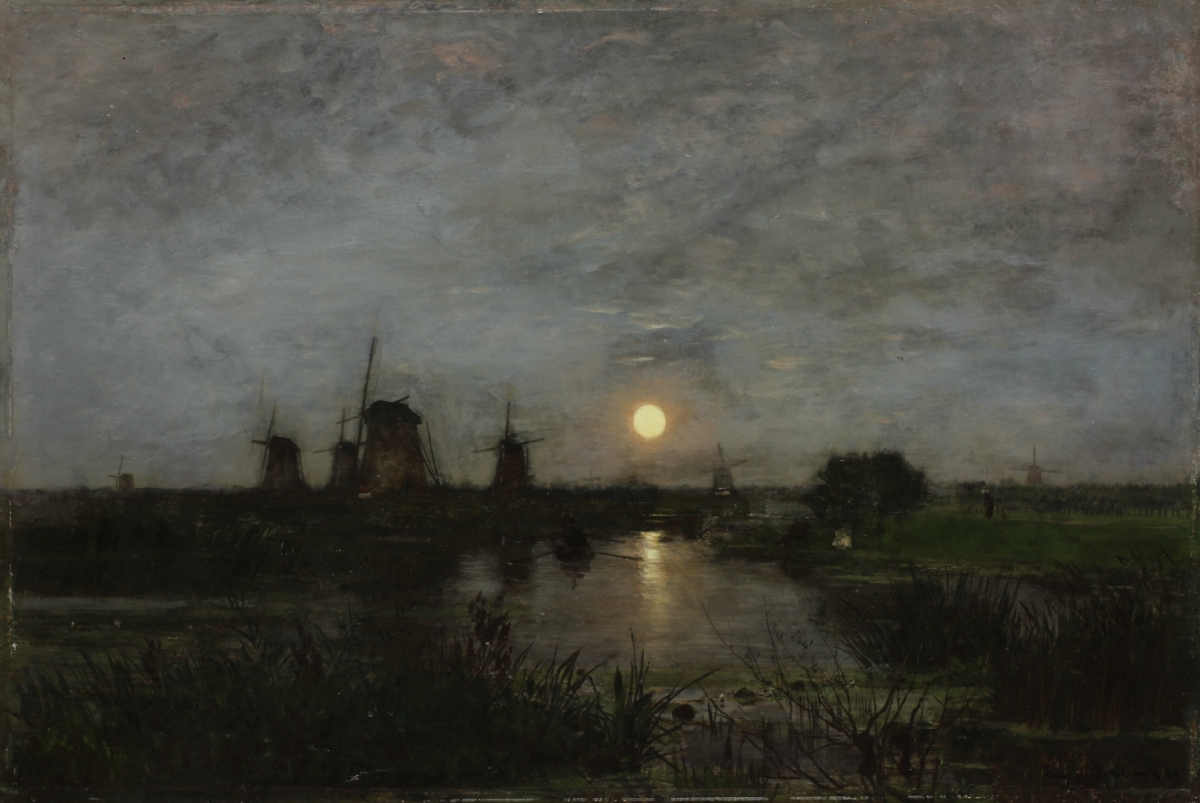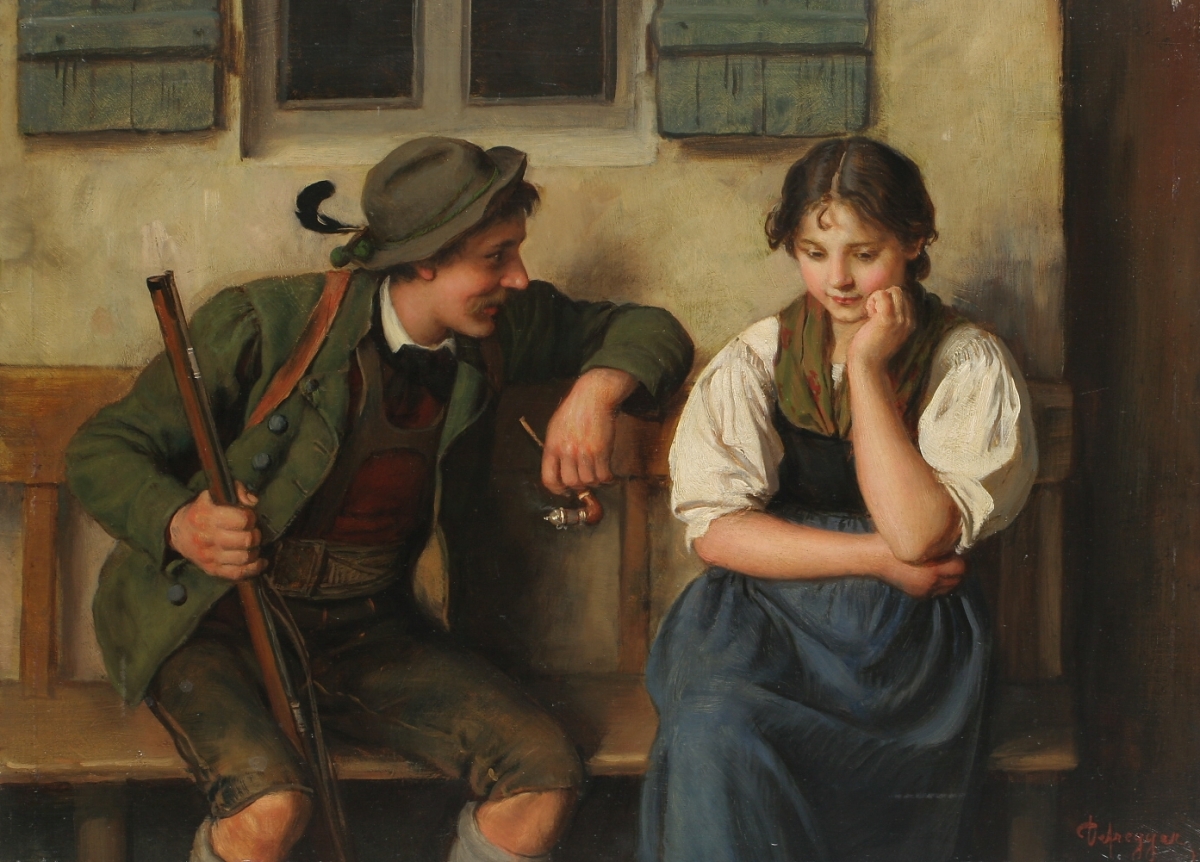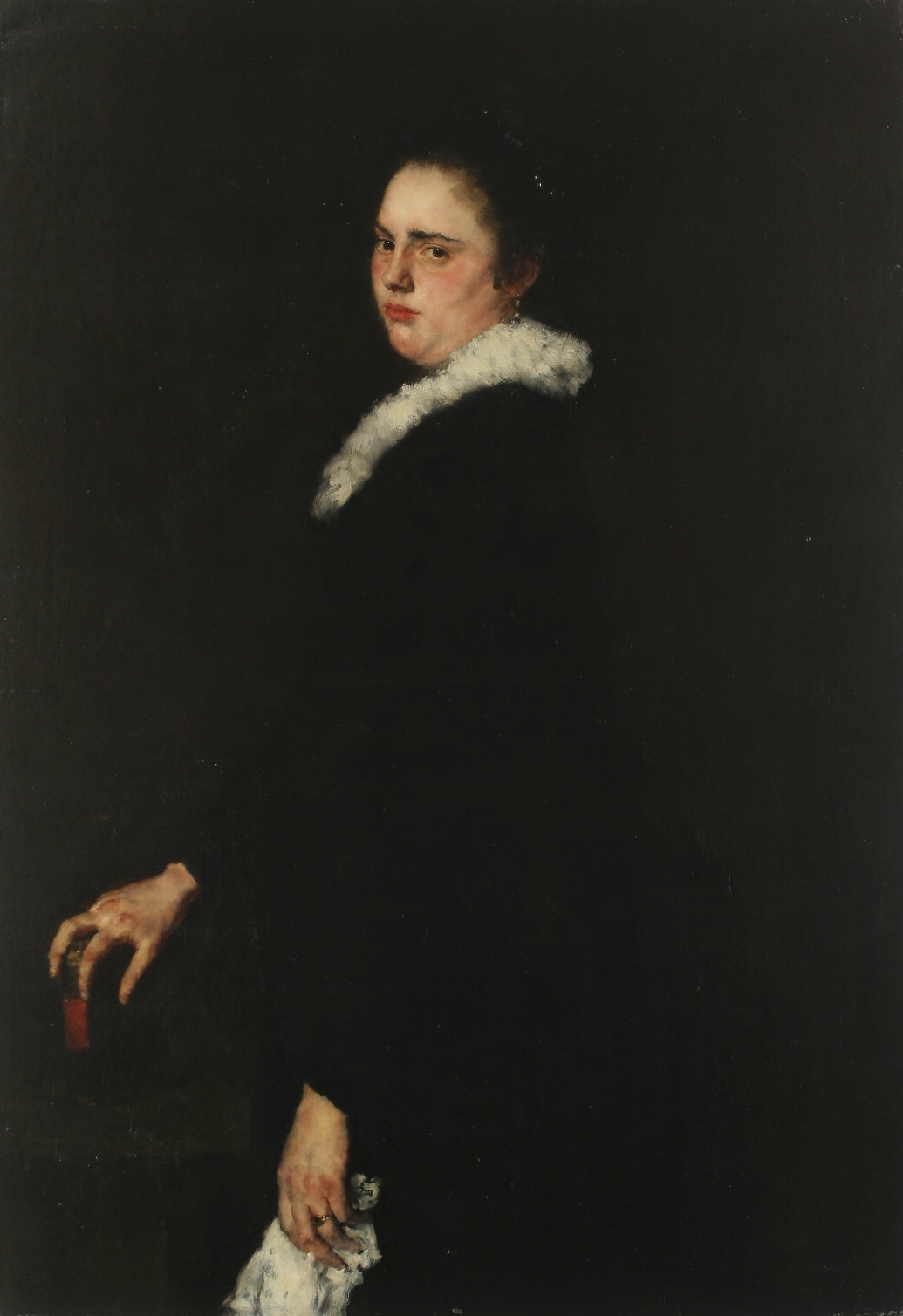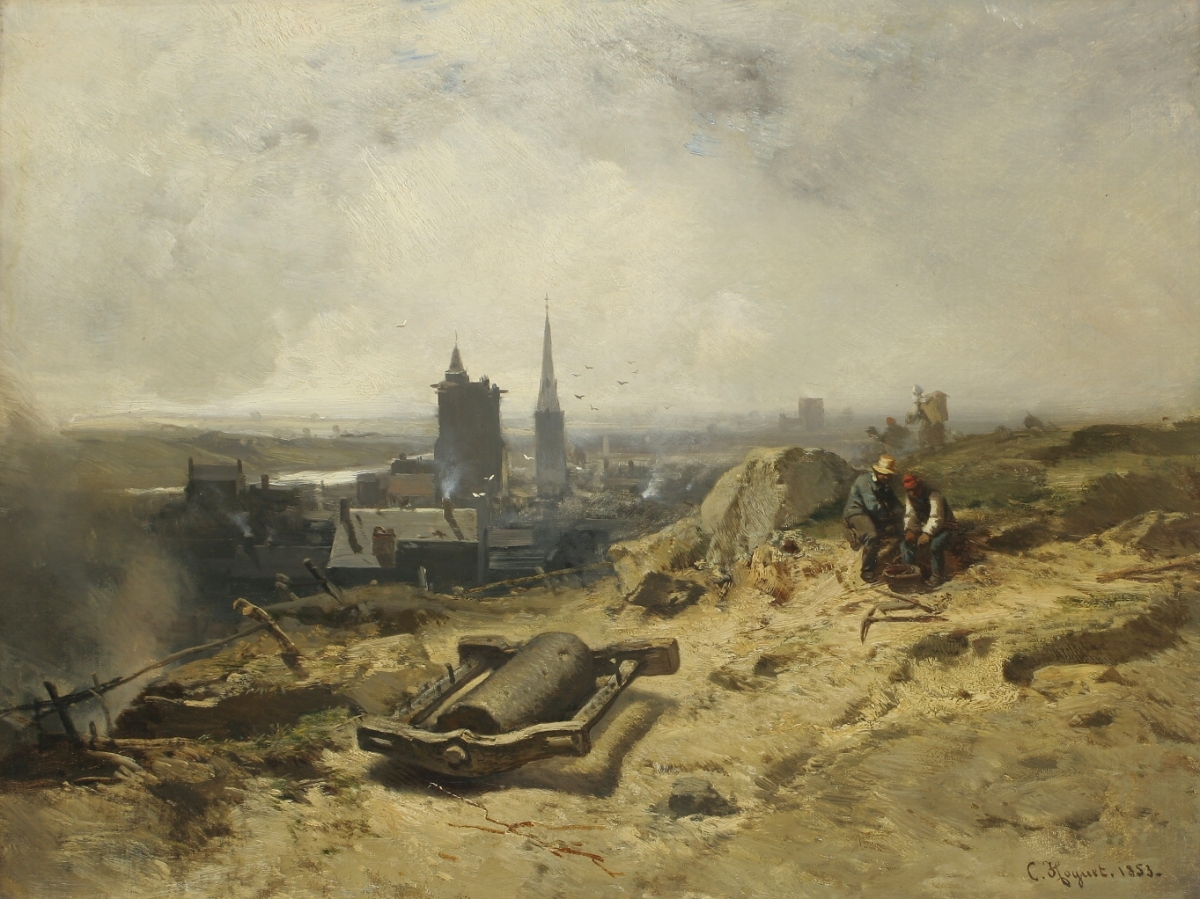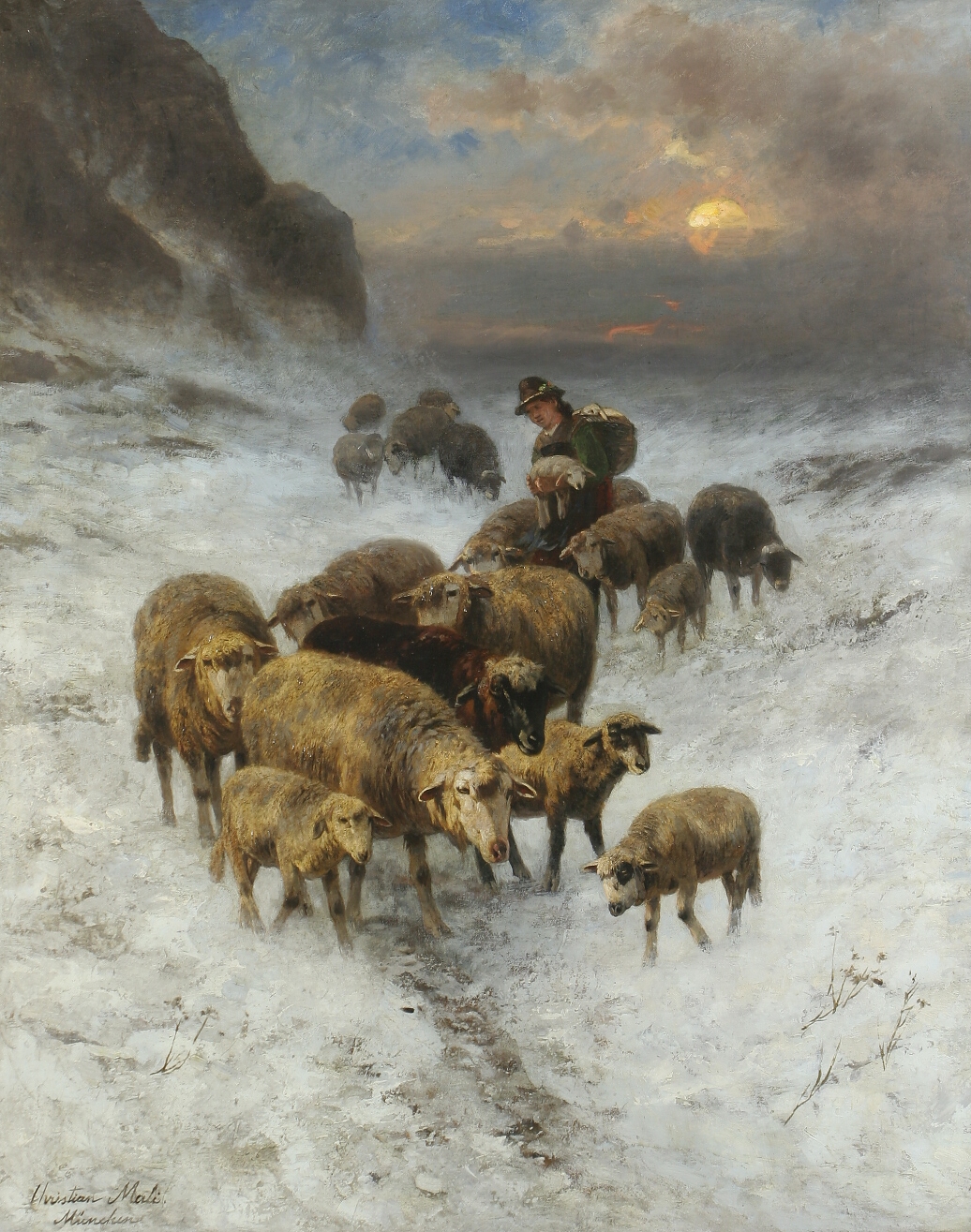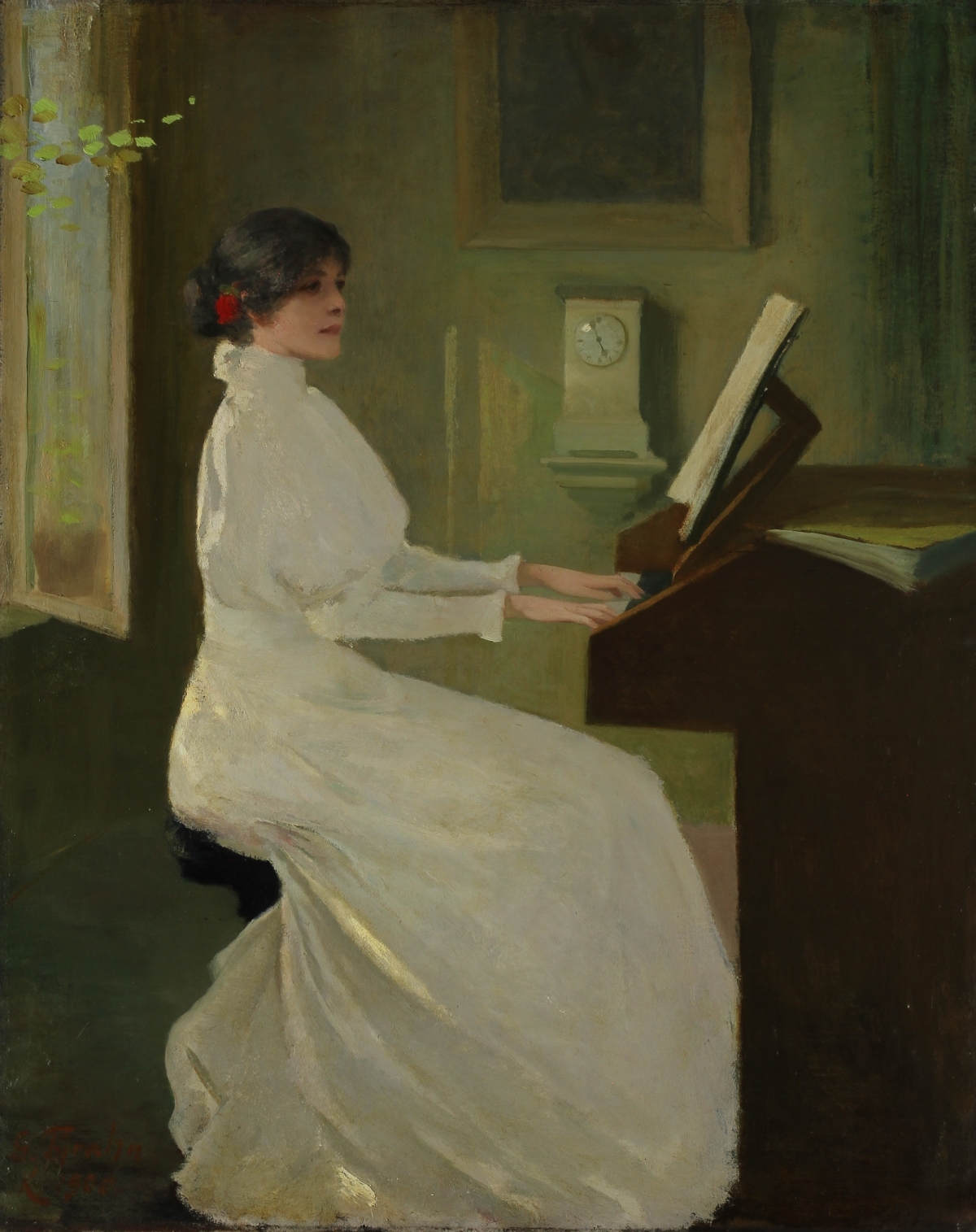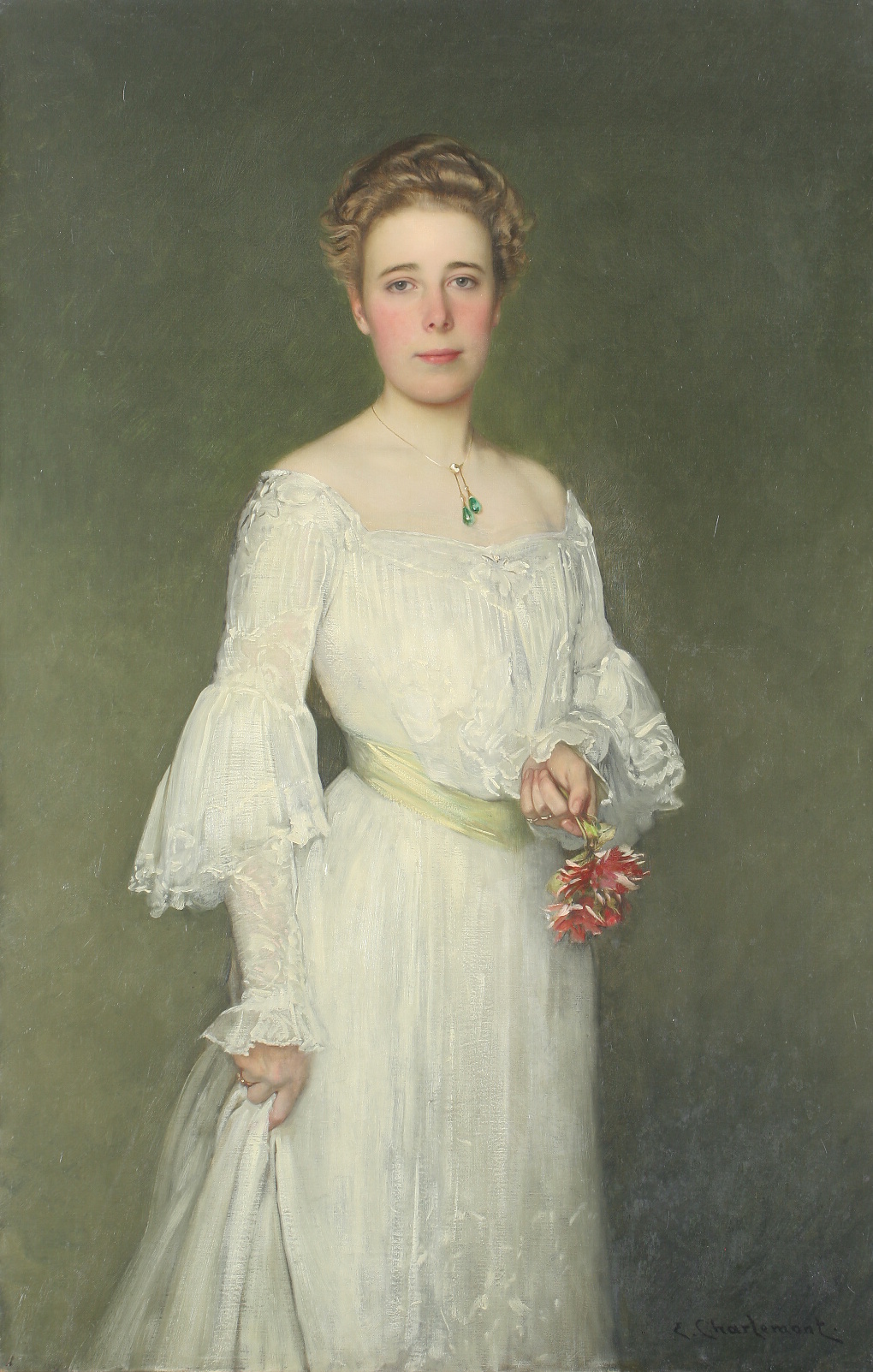Family background and connections
Heinrich's father, Johann Ignác von Liebieg (1802 Broumov–1870 Smiřice), also known as Johann Liebieg the elder, was the first noted member of the Liebieg family. In 1828, he bought a factory in Liberec from the Clam-Gallas family and founded a cotton mill there, which he originally ran with his brother Franz. He was married twice, first to Marie Terezie Münzberg, and second to Maria Luisa Jungnicksel. From his marriages, he had fifteen children altogether.
Johann Liebieg the elder became the most powerful textile industrialist in the Austro-Hungarian Empire. He held a number of important positions in public life and his merits in general industrial development brought him many honours, including, in 1868, his being raised to the status of a baron.
The family business - Johann Liebieg & Comp. - was later run by Liebieg's sons from his first marriage - Johann, Heinrich, and Theodor.
In 1862, Johann Joseph Mauritius von Liebieg (1836 Liberec–1917 Liberec), or Johann Liebieg the younger, married Leopoldina Terezie Mayer, daughter of a Viennese deputy mayor and commissioner of buildings Leopold Mayer. Between 1866 and 1870, he was a member of the Bohemian land parliament. Between 1871 and 1872 he had a villa built in Liberec, in which the Liberec Regional Gallery has been residing from 1946 to this day.
Like his brother, Heinrich Carl Julius von Liebieg (1839 Liberec–1904 Sachsenhausen near Frankfurt) met his future wife, Karoline Voigt, in Vienna. They married on 19 October 1867. Karoline Voigt was sister-in-law to Artur von Scala, a court councellor and director of the Museum of Oriental Arts in Vienna, which was founded in 1875 and frequently co-operated with the North Bohemian Industrial Museum.
Through marriage to Hyacinth Angelika Clemens, member of a wealthy banking family, Theodor Franz Emil von Liebieg (1840 Liberec-1891 Gondorf) gained romantic chateaux and grounds in Gondorf upon Mosel.
In 1863, the three brothers became shareholders in the company, and later, in 1866, general partners.
After their father's death in 1870, the brothers divided the business responsibilities in the following way. Johann ran the Viennese branch, Theodor the mother company in Liberec, and Heinrich the branches around Liberec. Some historical sources mention Heinrich's poor health, which most likely meant that Theodor often looked after the business in the branches belonging to his elder brother; especially after 1887, when Johann Liebieg the younger left the management of the company and retired. After Theodor's sudden death in 1891, the burden of running the family business was left to Heinrich, who was, nevertheless, helped by other family members and later also by Theodor's son Theodor Johann (1872-1939), a pioneer of the automobile in our area and the man behind the building of Liebieg's villa in today's Jablonecká street.
Heinrich von Liebieg – youth
According to Deutsche Biographie, Heinrich von Liebieg was born on 29 April 1839. However, Miloslava Melanová, in her article Heinrich Liebieg – mecenáš a sběratel, gives 28 August 1839 as the date of his birth. This is why we decided to verify the date of his birth in the Registry. Here, it is stated that Heinrich was born on 2 May 1839, son of Johann Ignác Liebig (here still spelled with one ‘e’) and his first wife Marie Terezie Münzberg.
From the 1890s, Heinrich spent much of his time in Vienna. Here, he befriended the painters Eduard (1848-1906) and Hugo (1850-1939) Charlemont. Eduard was already a respected artist in Vienna and Paris and became Liebieg's advisor concerning the acquisition of paintings for his collections.
Heinrich and Karoline had five children - Hans Heinrich (1868–1900), Alice Marie (1869-1938), Lucie (1870-1917), Marie Terezie (1872-1944) and Margareta Stela (1882-1960).
Museum related activities
The North Bohemian Industrial Museum was founded on 9 May 1873, as the first institution of its type in the Czech lands. Ten years later, in 1883, the museum became independent of the Trade Guild and created their own society, with new statutes that enabled the museum to become an institution of supra-regional scope. It was Heinrich von Liebieg who was the initiator of this step, and he also suggested the new name – North Bohemian Industrial Museum. He was offered the position of president of museum curators, but he did not accept it and instead became a purchasing agent and occasional donator of collection pieces. In 1882-83, Liebieg traveled to Vienna, Wroclaw, Berlin, Hamburg, Aachen, Koln, Frankfurt, Munich, Paris, Ghent, Brussels and Amsterdam (the number of these journeys does not quite confirm Liebieg‘s alleged bad health). In 1884 came a new chief curator - W.D. Vivié - and Liebieg became an honorary curator. Their co-operation lasted until March 1887. After this time, Liebieg started selling the collection items to the museum.
Liebieg, a person who significantly influenced the history of the North Bohemian Museum, donated almost three thousand collection pieces.
Collection of paintings
The collection, bequeathed to the town of Liberec by its owner in his will from 1902-1904, contained 209 works of 19th century German, Austrian and French painting. The only piece of old European painting in Liebieg's collection was Still Life with Books and Skull (Vanitas) (1629) by Dutch master Jan Davidsz de Heem. Exactly when Liebieg conceived the idea of bequeathing his collection to the museum remains unknown. It is likely, however, that the collection was not created for this purpose. In all likelihood, it was the death of the collector’s son Hans in 1900 that was an important impetus for this decision.
The quality of the largest part of the collection - 19th century German painting – was largely due to the works by Wilhelm Leibl, Franz von Deffreger, Gabriel von Max, Ludwig Dill and others which it contained, and in the Austrian painting collection, it was the works by Rudolf von Alt, Eduard Charlemont, Eugene Jettel and August von Pettenkofen that were of most value. The sets of works by the last three painters are amongst the largest outside Austria.
The pride of the 19th century French landscape collection was, above all, the set of seventeen paintings by the forerunner of Impressionism, Eugèn Boudin (one of the largest and finest outside France), and also the works of the Barbizon school - Charles-Francois Daubign, Narcisse Virgilio Díaz de la Peńa, and Théodor Rousseau. The collection was being compiled from the 1860s, the French landscape collection probably during the 1890s. Many works were acquired by purchasing inheritances, as was the case with his acquisitions from the Galerie Miethke in Vienna.
The topical composition of Liebieg's collection was akin to the collection of Brno patron and donor Heinrich Gomperz (1843-1894). The main focus was on the works of landscape painting, which were accompanied by genre works and portraits mostly by German and Austrian painters of the second half of the 19th century. Unlike Gomperz, Liebieg was not much interested in the works of the Dutch and Italian schools. He much preferred the works of 19th-century French landscape painting. In his collection, the works of Munich and Berlin painters were prevalent, from the age of Biedermeier to the 1890s. A substantial number of genre works and family portraits were by the Viennese painter Eduard Charlemont, with whom Liebieg, his brothers, and other family members - like Franz Schmitt (1816-1883) from Český Dub (a cousin of Johann Liebieg the elder) - maintained a friendly relationship.
After Liebieg's death, the whole collection was exhibited and an exhibition catalog published at the Czech-German exhibition in Liberec in 1906. In the 1920s, the town council seriously considered building a new gallery, or rather adding a gallery wing to the museum building, and made several steps towards this goal, including the preparation of building plans. When in 1929 yet another attempt to realize this plan failed, however, the idea gradually fell into oblivion. At first, the collection became a part of the art department in the North Bohemian Museum, but after World War II it formed the foundation of the newly opened Liberec Gallery's collection.
The will written in 1902-1904
In Liebieg's will, his collection of paintings was listed as the very first item. It was followed by the buildings to which he had devoted himself in the last decade of his life. Then came historical and art objects, financial legacies, and only as the last item came the money to be inherited by his daughters.
His Hohenhabsburg (nowadays called Liberecká výšina), built between 1900 and 1901, was given to the town of Liberec, while his daughters were to have the life interest in using the gothic room on the first floor of the tower.
His Frankfurt villa, finished in 1896, was bequeathed to his sister Gabriel Weinrich (1848-1914) who, in his own words, “stood faithfully by her brother's side at all times”. The town of Frankfurt was to have the first option to buy this building for a very favorable price, on condition that they established a museum there “for all time”. The town of Frankfurt took this offer and thus also acquired the adjacent landscape garden with exotic trees. In 1909, the Museum of Sculpture was established there, and its first acquisitions were the statues Liebieg had placed in this very garden. The Liebieghaus, as the museum has been called to this day, recently celebrated its 100th anniversary.
Liebieg wished his unfinished Art Nouveau Waldvilla at Schmidtstein in Liberec to be completed using the money from his legacy. The right to use this building was passed on to Gabriela Weinrich and Sofia Rohe from Kaiserslautern. After their death, the villa and other grounds in Harcov were to become the property of the town of Liberec.
To the Liberec museum, the collector bequeathed over 2500 historical and art objects. He wished them to be exhibited as one comprehensive collection. This is probably why the long-time museum director, Dr. Gustav Edmund Pazourek, who worked for the museum from 1893 until 1905, in the end, left his position – for this was an almost superhuman task. His successor opened a grand exhibition of Liebieg's legacy in 1906. In five exhibition rooms, the furniture brought from the Frankfurt villa was exhibited together with a large number of collection pieces from Liebieg's Liberec apartment. Heinrich von Liebieg's bust by Theodor Charlemont (1859-1938) was installed in the central area on the first floor of the museum building.
The extent of the collector‘s interest in this area is staggering and cannot be the subject of this text. Nevertheless, it is impossible not to mention it at least briefly. Liebieg's cooperation with the North Bohemian Industrial Museum brought the collector the chance to enrich and expand his private collection as well. With great pleasure, Liebieg collected metal, porcelain, earthenware, enamel, and textile art and antique items of European origin (mostly German, French, Dutch and Italian) as well as objects from the Far East (Chinese and Japanese), India and the Pacific regions. He collected furniture, weapons and their decorations, book-bindings, cutlery, keys, jewelry, pocket watches, various containers, vases, flagons, porcelain and bronze statuettes, tapestries, lace, and other textile items. One of the criteria he used for choosing objects for his collection was the quality and richness of the craftsmanship. The collection pieces served mostly to furnish Liebieg's apartments in Liberec, Frankfurt, and Vienna, and their total number reached 2596 items. The collection was maintained by the museum as a whole until the beginning of World War II. After the war, the individual pieces were incorporated in the museum’s collections without any attempt at keeping them together as a comprehensive exhibition.
The town of Liberec was given 1 000 000 Austrian crowns for a foundation for impoverished, sick and elderly people and homeless children. Furthermore, 600 000 crowns were donated to a foundation for the preservation, maintenance, expansion, and renewal of the collection of painting. Some money was also bequeathed to the North Bohemian Museum in Liberec - 300 000 crowns for the expansion of collections - and some was given to Liberec town library – 100 000 crowns to be precise.
The collector's share of Johann Liebieg & Comp. was bequeathed to his nephew Theodor von Liebieg the younger, for whom Liebieg felt an exceptional, almost fatherly affection.
Conclusion
Henrich von Liebieg belongs to the generation of gründer entrepreneurs - collectors, who in the 1860s took an interest in buying artworks. He was as comfortable in the world of industry and commerce as in the political environment of the Viennese House of Commons. During his life, he donated many collection pieces as well as his mental energy to the Liberec Museum. His interest was not limited to the fine arts. On the contrary, most of his collections contained examples of the applied arts. He did not gather only items of European origin, but moved freely through ages and continents and did not omit artifacts from the Islamic world and the art of the Far East, India, and the Pacific region.
His overall support of the Liberec museum together with his financial gift to the town of Liberec and the donation of his art collection to the Liberec museum puts Liebieg on a level with such generous patron as Prince Johann II of Lichtenstein or Baron Karl Adalbert Lanna His message concerning the need to widen cultural horizons without any concern for geographical boundaries is also not negligible.
